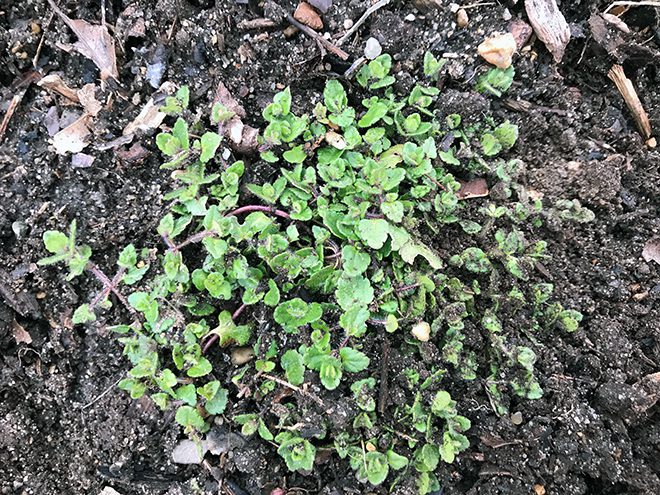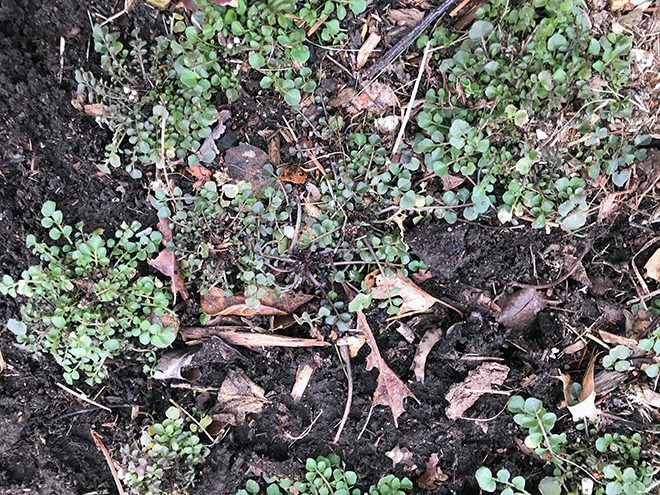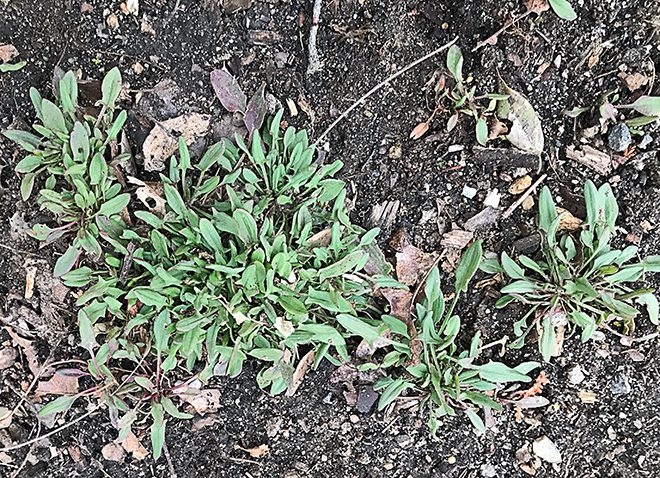Spring Weeds In Your Lawn and Garden ~ April
Spring Weeds In Your Lawn and Garden ~ April
Now that it’s finally warming up, many on the Cape are taking a close look at what is going on in their lawn and gardens, and they are seeing weeds. Areas that were fine last fall are suddenly filled with small plants, many of them with tiny leaves. “What are these weeds and how can I get rid of them?” people ask. They are the “winter weeds” that germinate in the fall or even over the winter, grow for a few months and then start to come into flower in April.
With the exception of the dandelion and sorrel, which are perennial, the winter weeds are annuals. But it’s to your advantage to get rid of them in April because after they flower they will set seeds, and those seeds will sprout next fall and winter. Pulling them out now will mean fewer to deal with in the future. “Isn’t there something I can spray on them?” people ask. If they are in your lawn you can use a broadleaf weed killer, but that may not kill these weeds before they set seeds, and then you’ll just have more to deal with next year. In a garden an herbicide will kill all the plants in the area, so that’s not a smart approach when these grow among shrubs and perennials.
Fortunately, these weeds are easy to hand pull, again, with the exception of the deep-rooted dandelion. For those who have a difficult time getting down on the ground, and regular garden hoe is the tool of choice for chopping the plants off at ground level. Because they are annuals you don’t have to pull out the root systems.
Sorrel is the hardest to remove as it has extensive root systems so hoeing isn’t usually an option. Apply lime to areas where sorrel is a problem if possible, since this is a weed that prefers acid soil. But digging and hand removal might be necessary with this weed.
Here are the weeds we are dealing with at this time of year, with notes about how to tell them apart.

This is Veronica arvensis, commonly called corn speedwell. It looks similar to bittercress and chickweed, but is often tighter in growth and the leaves are slightly scalloped on the edges. It has a tiny, pale blue to lavender flower later in the spring.

This is Stellaria media, commonly called chickweed. The leaves have smooth edges and are in groupings that are opposite along long, thin stems. The flowers are tiny and white, with five pairs of petals (ten petals in a daisy-like arrangement.) One plant can spread up to a foot across.

These are Cardamine hirsuta plants, commonly called bittercress or hairy bittercress. The leaves are opposite along the stems in neat rows. Dark, wiry stems come up in the center with tiny white flowers at their tops. Bittercress is coming into flower now, in early April.

Rumex acetosella, commonly called sheep sorrel, red sorrel or just sorrel, has longer leaves than the other winter weeds and like the dandelion, is a perennial. One means of fighting this weed is to lime the area as long as the other plants you’re growing there like a neutral pH of soil. (Don’t lime around Rhododendrons or holly, for example.) Sorrel grows very well in acidic soil but not so well when the pH is raised.

Most people easily recognize the common dandelion. Since these have a taproot, using a tool such as a Cobrahead weeder, a dandelion digger, or even a thin trowel works well.
In areas where there isn’t extensive bark mulch or other flammable materials a Weed Dragon flame torch can be used to kill these winter weeds. Small sections can also be killed with boiling water, taking care, of course, not to splash hot water on yourself or desirable plants.
Subscribe To Our Newsletter
Sign up for our weekly email about sales and events.
